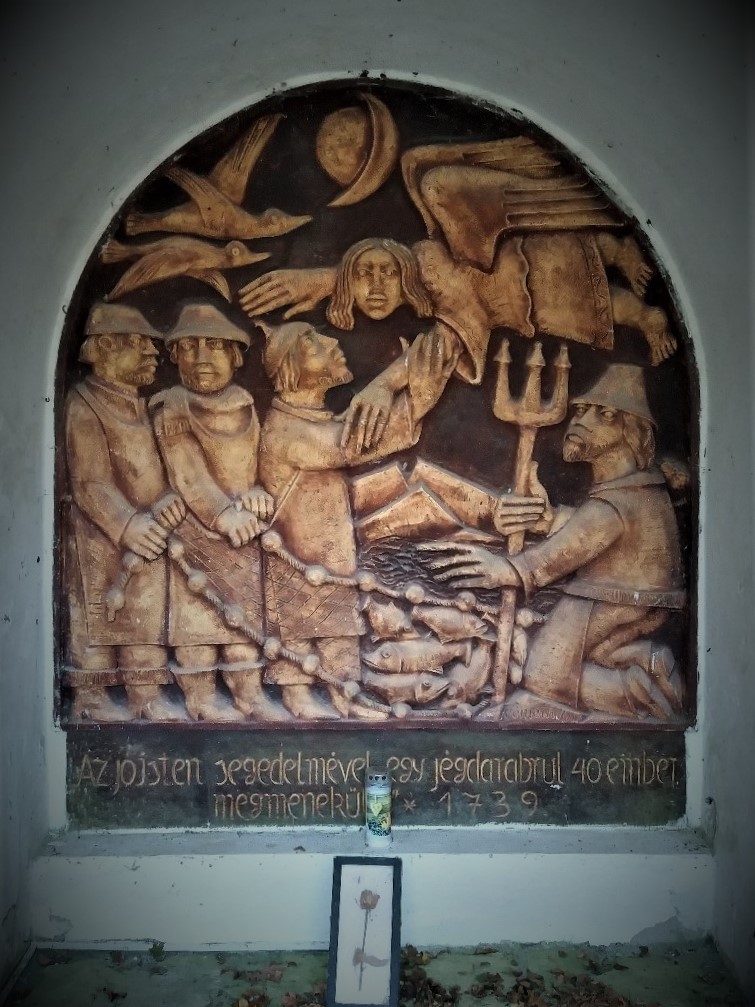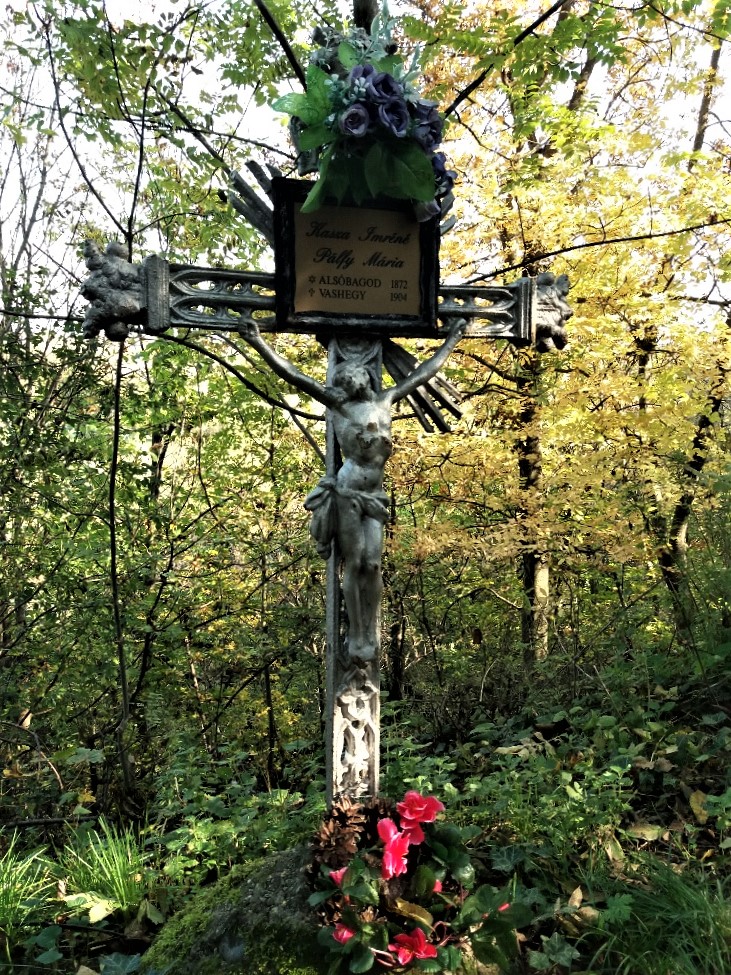


Climbing the hill to the church of Szent Mihály (St Michael) in Vonyarcvashegy, it was hard to believe that 136-metre-tall dolomite was once an island. I read that but I’m not how true it is. Back in the thirteenth century, the top of the hill was crowned by a small fort. The origins of the church that now stands there can be traced back to 1622. It had a few do-overs, the most notable, perhaps, being in 1739.
That year, some 46 fishermen went fishing in the frozen Balaton. They cut through the ice and in doing so, broke some loose. They were caught up in the flow. Six fell into the water and died. With a sudden change in wind, the others drifted to shore. Believing their survival to be a miracle, they pledged to restore the ruined chapel as a testament of thanks.


 At the first bend in the road to the top sits what was the old mortuary. It, too, has been restored. Inside is a memorial by ceramist Németh János. In 1994, the local powers that be recognised the tourist value of the site and initiated the annual 40 Fishermen Memorial Day and Day of Balaton Fishermen. Held in the early days of August each year, professional fishermen from all around the Balaton gather to lay a wreath at the site of what is said to be Hungary’s only fisherman’s church.
At the first bend in the road to the top sits what was the old mortuary. It, too, has been restored. Inside is a memorial by ceramist Németh János. In 1994, the local powers that be recognised the tourist value of the site and initiated the annual 40 Fishermen Memorial Day and Day of Balaton Fishermen. Held in the early days of August each year, professional fishermen from all around the Balaton gather to lay a wreath at the site of what is said to be Hungary’s only fisherman’s church.

The path forks at the memorial. Right takes you up to the church, and left takes you through the small cemetery to steps that climb to the edge of the hill. Locals from Vashegy were buried here till the 1950s. The one later burial we saw was in a family plot. The graves were lit with candles and laden with flowers. It was the first day of November, All Saints Day, when Hungarian families gather to pay their respects to their dead.


The small, simple family plots were a far cry from some of the mausoleums I’ve seen but were all the more beautiful for their simplicity. There was an earthiness, too, to how the falling leaves had blanketed the distinction between path and plot.


Lots of the gravemarkers bore the same family name – Angyal – which translates to Angel in English. I came across a piece on the origins of the name, if you’re interested.


There was none of the flash of form and fancy that you find in bigger, city cemeteries and it was all the more wondrous because of it. Walking through the trees with simple graves on either side was all a little surreal.




In front of the church, a wooden calvary depicts Jesus on the cross, flanked by the two thieves. I remember back in primary school, Mother Patrick had us look at a painting for what seemed like hours to figure out the anomaly. Eventually, she had to point it out. The thieves were tied to their crosses; Jesus was nailed to His. I had taken this as gospel and noted same smugly to himself. The carver had gotten it wrong, I said. But I was the one who was wrong. Google being what it is, solved the mystery for me. Apparently there’s nothing in the bible that says the thieves were crucified any differently to Jesus. My bad.

Behind the church, there’s another monument, this one to local mountaineer Gárdos Sándor, the doctor on the Millennium Mount Everest Expedition who died tragically during an expedition in October 2001. He hadn’t yet turned 40. While his body lies entombed in a glacier, his memory is very much alive. In 2011, to mark the 10th anniversary of his death, friends and fellow climbers held a memorial hike that ended up at Szent Mihály Domb. The large boulder has an inscription from a poem by Áprily Lajos – A zarándok (The pilgrim)
S még mindig ment és óriásra nőtt:
égő zarándok, vakmerő apostol.
Míg elnyelte a magasság s a csend:
Himalája, a roppant kőkolostor.
A translation, courtesy of the inimitable Bernard Adams:
Still on he went and grew to giant size
fearless apostle, pilgrim passionate,
on to be swallowed by the silent heights,
the vast stone cloister of Himálaya.

It really is a very special place with panoramic views across the Balaton of the volcanic hills the stretch from Szigliget to Badacsony. It’s worth a visit, if you’re in or around Keszthely, Hévíz, or anywhere this part of the Balaton.